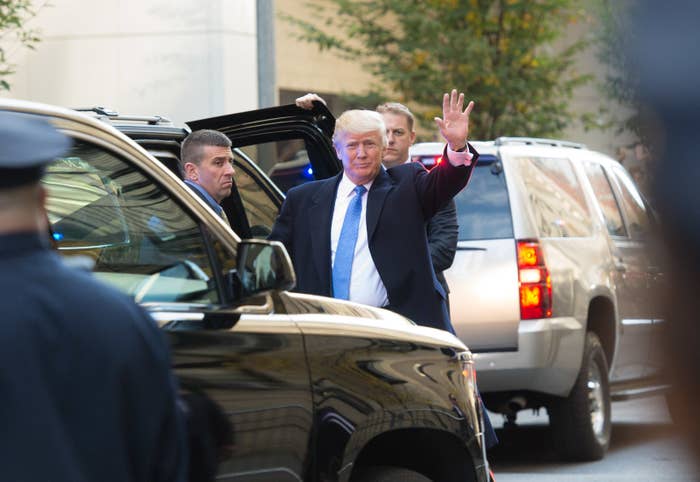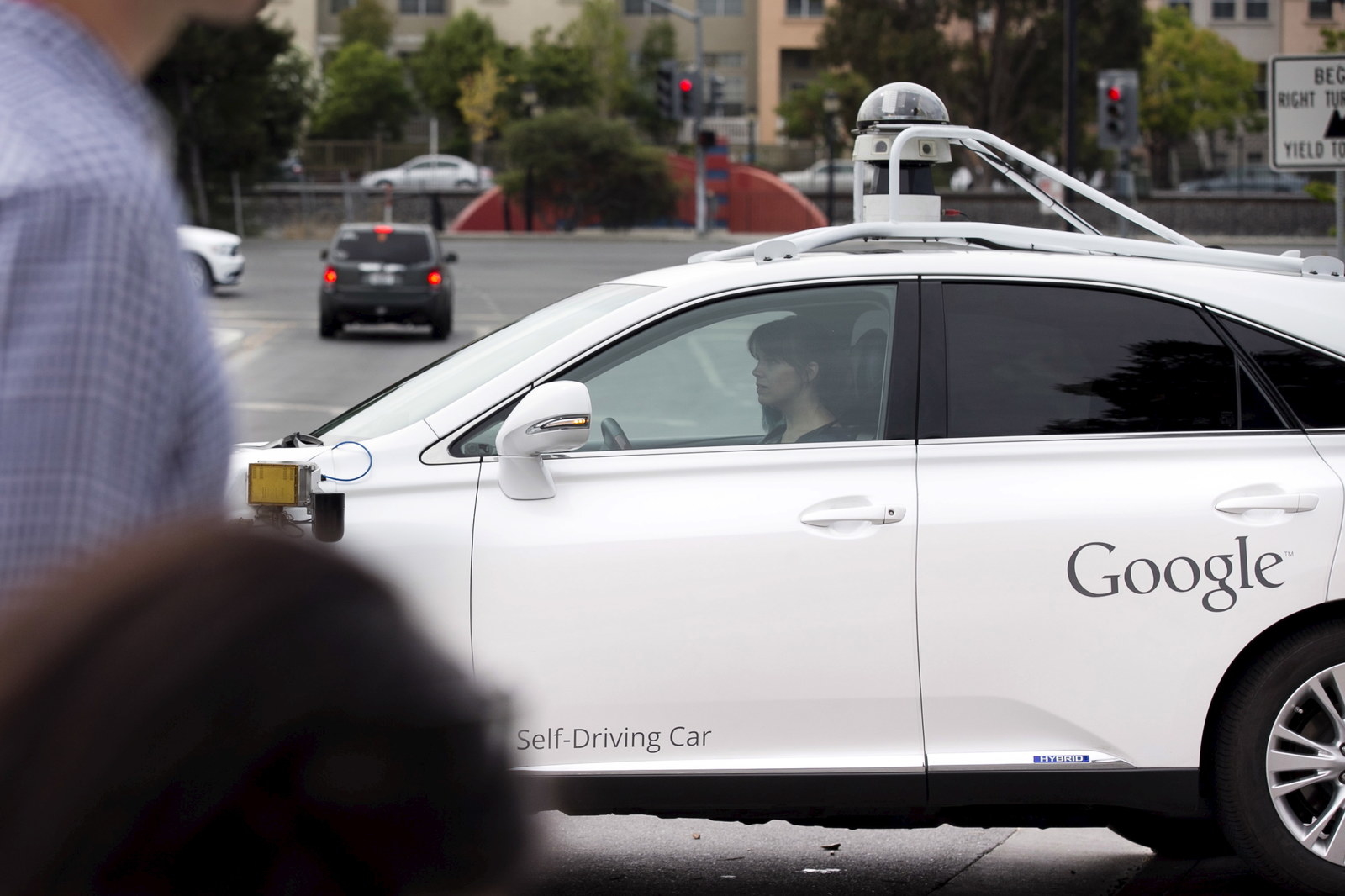
Donald Trump is, if anything, a builder – of hotels, casinos, golf courses, apartments. He campaigned on introducing a 10-year, $1 trillion infrastructure plan. And in his acceptance speech Tuesday night, he promised to “rebuild our highways, bridges, tunnels, airports, schools, hospitals.”
Who he will tap to lead that effort remains unclear, after presidential his win Tuesday against Hillary Clinton stunned the country. Reports have circulated speculating several cabinet picks; BuzzFeed News obtained a list of 41 candidates shortlisted for top positions. Noticeably absent: a name for transportation slot. Sources in the industry and policy circles in DC said they aren’t even sure if that position is on the radar yet. A staffer for a House Republican told BuzzFeed News that people are “still processing the results of the election” and “haven’t gotten to names yet.”
Trump’s transportation secretary will shoulder the role during a crucial point for the transportation industry — a period in which automakers and tech companies are racing to put self-driving cars on the road, and regulators are determining how to deal with them. Cash-strapped local governments are also grappling with uncertainty and underinvestment in public transportation infrastructure.
"The whole issue of autonomous vehicles is just at the starting gate."
In September, the Department of Transportation released guidelines for autonomous vehicles. Anthony Foxx, who President Obama named transportation secretary in 2013, has done several Silicon Valley tours and met with companies developing self-driving cars, including Google. He told BuzzFeed News he expects self-driving cars to start becoming mainstream in about five years, and has prioritized preparing the department to deal with the dramatic shift they herald. The guidelines released in September, though, are voluntary. They outline safety points for the technology and seek to gather information from companies about how they are dealing with cybersecurity, technical failures and ethical dilemmas – should the car save the passenger or a pedestrian in the event of a crash? It may fall to Trump’s transportation secretary to finalize those rules.
“The whole issue of autonomous vehicles is just at the starting gate...we’ll have to wait to see who gets in that job and what priority they place on it,” Ray LaHood, an Illinois Republican who served as President Obama’s transportation secretary during his first term, told BuzzFeed News. “I don’t think anybody knows really who’s going to get picked for any of these positions.”
The next transportation secretary will play a key role in determining whether the US encourages a broad shift to self-driving vehicles or adopts a more tempered approach. Foxx’s five-year timeline matches up with industry expectations about when companies will begin testing self-driving technology at a greater scale. Ford plans to mass-produce self-driving vehicles for ride-hail use by 2021. And in September, Uber launched a pilot program to put passengers in self-driving cars in Pittsburgh. Outside the US, Volvo is preparing to launch programs to give 100 people in London, Sweden, and China self-driving vehicles. How a Trump Department of Transportation sets ground rules for automated vehicle technology – or if it choses to take a back seat and let states make their own rules – could alter the trajectory and pace of both automakers and tech companies’ efforts.

In the Obama administration, that enthusiasm for autonomous car technology trickled down from the president himself. Obama created the US Digital Service, described as a technological “SWAT team” to improve government IT, for example, by digitizing the refugee admissions process. He penned an op-ed calling self-driving cars “an emerging reality with the potential to transform the way we live.”
One potential Trump pick for secretary of transportation could be Rep. Bill Shuster, the Pennsylvania Republican who chairs the House transportation and infrastructure committee. Shuster endorsed Trump in April. Prior to running for Congress, he worked on his family’s farm in Bedford County, Pennsylvania, and owned an automobile dealership – experience that could resonate with Trump’s populist base. He’s been a member of the transportation committee since 2001 and previously chaired a subcommittee on railroads, pipelines, and hazardous materials, and another one on economic development, public buildings, and emergency management.
That said, for the transportation secretary post, president-elects often look to mayors and governors, given their day-to-day experience managing local infrastructure, transportation and traffic. Trump, who has no prior government experience himself, also could pluck his transportation secretary from the private sector.
On Wednesday, Trump’s team launched GreatAgain.gov, its transition website. The site includes “transportation & infrastructure” under its section for “getting America back to work again.”
“Americans deserve a reliable and efficient transportation network and the Trump Administration seeks to invest $550 billion to ensure we can export our goods and move our people faster and safer,” the page reads, offering few other details. In a 100-day plan on his campaign website, Trump said he would spur $1 trillion in infrastructure investment over the next 10 years.
“Trump has to get that through Congress,” LaHood said. “Probably what he’ll be doing is he and [Vice President-elect Mike Pence] will be sitting down with Paul Ryan and figuring out what the agenda will be, and hopefully infrastructure will be right at the top.”
LaHood now co-chairs a coalition called Building America’s Future, a bipartisan infrastructure advocacy group, with ex-New York City Mayor Michael Bloomberg and Ed Rendell, who was one of Clinton’s advisers on infrastructure issues.
The infrastructure page of Trump’s campaign website says he plans to “...incorporate new technologies and innovations into our national transportation system such as state-of-the-art pipelines, advancements in maritime commerce, and the next generation of vehicles.”
"Just looking through Trump’s plan, it just looks like there’s a lot of blanks that need to be filled in."
The website also notes that Trump plans to make broader use of public-private partnerships, something local governments, looking to cut costs, have increasingly done by inking contracts with Uber and Lyft. “This is particularly telling when thinking about the continued growth of transportation technology – much of its development has hinged upon pilot programs between public and private organizations,” said Ann Henebery, a spokeswoman for the Eno Center for Transportation, a nonprofit, nonpartisan think tank. But, she added, “what is key to remember from a political perspective is that Trump’s campaign platform stands against everything that [automated vehicles] are: automated machines that could eventually replace low-skilled labor, that are products of largely white-collar workers, and that are most useful to those who live in urban centers.”
Given the lack of specifics, transportation experts are struggling to uncover policy takeaways from Trump’s “half-written, cryptic talking points,” Michael Sargent, who researches transportation issues at the conservative think tank The Heritage Foundation, told BuzzFeed News.
“Just looking through Trump’s plan, it just looks like there’s a lot of blanks that need to be filled in,” Sargent said. “It seems to me like there has not been very much thought put into this. He doesn’t really mention technology."
